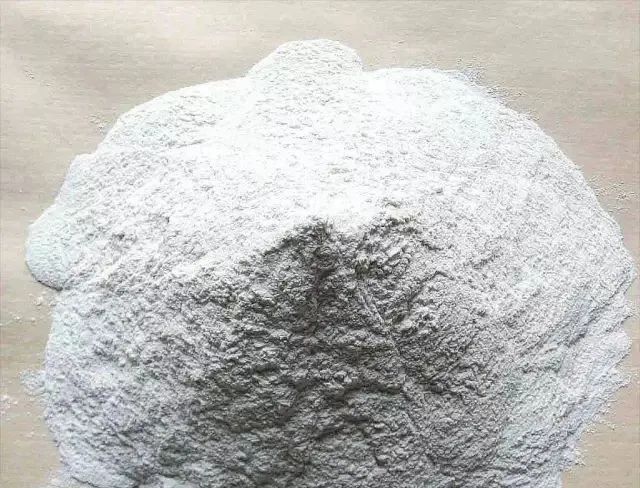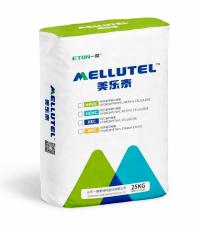Water retention of cellulose ethers
Water retention of cellulose ether: In the production of building materials, especially dry powder mortar, cellulose ether plays an irreplaceable role, especially in the production of special mortar (modified mortar), it is an indispensable and important part .
The important role of water-soluble cellulose ether in mortar is mainly in three aspects, one is excellent water retention capacity, the other is the effect on the consistency and thixotropy of mortar, and the third is the interaction with cement. The water retention effect of cellulose ether depends on the water absorption of the base layer, the composition of the mortar, the layer thickness of the mortar, the water demand of the mortar, and the setting time of the coagulating material. The water retention of cellulose ether itself comes from the solubility and dehydration of cellulose ether itself. It is well known that although the cellulose molecular chain contains a large number of OH groups with strong hydration, it is not soluble in water itself, because the cellulose structure has a high degree of crystallinity.
The hydration ability of the hydroxyl group alone is not enough to pay for the strong intermolecular hydrogen bonds and van der Waals forces. Therefore, it only swells and does not dissolve in water. When a substituent is introduced into the molecular chain, not only the substituent destroys the hydrogen chain, but also the interchain hydrogen bond is destroyed due to the wedging of adjacent interchain substituents. The greater the distance. The greater the effect of destroying the hydrogen bond, after the cellulose lattice is expanded, the solution enters, and the cellulose ether becomes water-soluble, forming a high-viscosity solution. When the temperature increases, the hydration of the polymer weakens, and the water between the chains is expelled. When the dehydration is sufficient, the molecules begin to aggregate, forming a three-dimensional network structure and the gel folds out.
Factors that affect the water retention of mortar include cellulose ether viscosity, addition amount, particle fineness and use temperature.
The higher the viscosity of the cellulose ether, the better the water retention performance. Viscosity is an important parameter of MC performance. At present, different MC manufacturers use different methods and instruments to measure the viscosity of MC. The main methods are Haake Rotovisko, Hoppler, Ubbelohde and Brookfield. For the same product, the viscosity results measured by different methods are very different, and some even double the difference. Therefore, when comparing viscosity, be sure to do it between the same test methods, including temperature, rotor, etc.
Generally speaking, the higher the viscosity, the better the water retention effect. However, the higher the viscosity and the higher the molecular weight of MC, the corresponding reduction in its solubility, which has a negative impact on the strength and construction properties of the mortar. The higher the viscosity, the more obvious the thickening effect of the mortar, but it is not proportional. The higher the viscosity, the more sticky the wet mortar will be. During construction, it will stick to the scraper and have high adhesion to the substrate. But it does little to increase the structural strength of the wet mortar itself. During construction, the performance of anti-sagging performance is not obvious. On the contrary, some low-viscosity but modified methyl cellulose ethers have excellent performance in improving the structural strength of wet mortar.
The larger the amount of cellulose ether added in the mortar, the better the water retention performance, the higher the viscosity, the better the water retention performance.
For particle size, the finer the particle, the better the water retention. After the large particles of cellulose ether come into contact with water, the surface dissolves immediately to form a gel, which wraps the material to prevent the continuous infiltration of water molecules. . It greatly affects the water retention effect of its cellulose ether, and solubility is one of the factors for choosing cellulose ether.
Fineness is also an important performance index of methyl cellulose ether. The MC used for dry powder mortar is required to be powder, with low water content, and the fineness also requires 20% to 60% of the particle size to be less than 63um. Fineness affects the solubility of methyl cellulose ether. Coarse MC is usually granular, and it is easy to dissolve in water without agglomeration, but the dissolution rate is very slow, so it is not suitable for use in dry mortar. In dry powder mortar, MC is dispersed among the cementitious materials such as aggregates, fine fillers and cement. Only fine enough powder can avoid the agglomeration of methyl cellulose ether when mixing with water. When MC is added with water to dissolve the agglomerates, it is difficult to disperse and dissolve.
MC with coarser fineness is not only wasteful, but also reduces the local strength of the mortar. When such a dry powder mortar is constructed in a large area, the curing speed of the local dry powder mortar is significantly reduced, and cracking occurs due to different curing times. For the spray mortar using mechanical construction, due to the shorter stirring time, the fineness is required to be higher.
The fineness of MC also has a certain influence on its water retention. Generally speaking, for methyl cellulose ethers with the same viscosity but different fineness, in the case of the same addition amount, the finer the finer the better the water retention effect.
The water retention of MC is also related to the temperature used, and the water retention of methyl cellulose ether decreases with the increase of temperature. However, in practical material applications, dry powder mortar is often applied to hot substrates at high temperatures (higher than 40 degrees) in many environments, such as exterior wall putty plastering under the sun in summer, which often accelerates Curing of cement and hardening of dry mortar. The drop in water retention has led to a clear perception that both workability and crack resistance are affected, and it is particularly critical to reduce the effect of temperature factors under such conditions.
Although methyl hydroxyethyl cellulose ether additive is currently considered to be at the forefront of technological development, its dependence on temperature can still lead to the weakening of dry mortar performance. Although the amount of methyl hydroxyethyl cellulose (summer formula) is increased, the workability and crack resistance still cannot meet the needs of use. Through some special treatments for MC, such as increasing the degree of etherification, the water retention effect can be maintained at a higher temperature, and it can provide better performance under harsh conditions.








